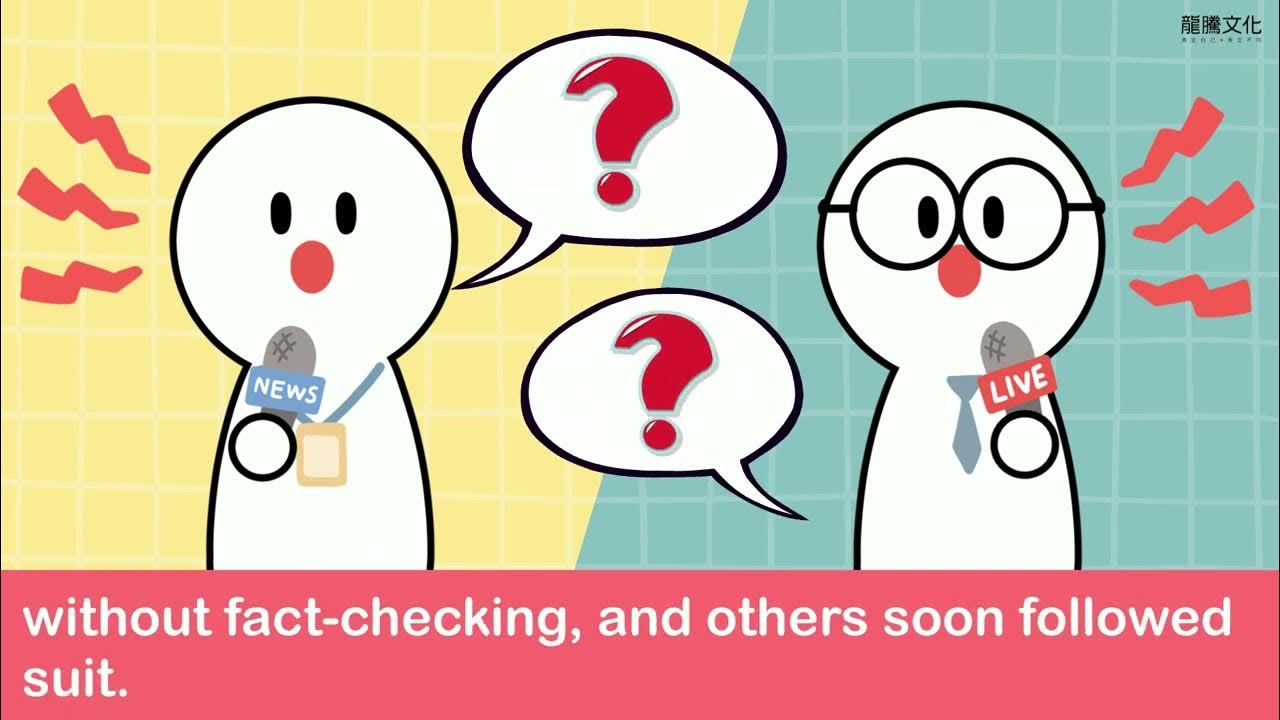How to Spot Fake News - FactCheck.org
Summary
TLDRThis video script addresses the prevalence of fake news, offering strategies to identify and avoid it. It emphasizes checking the legitimacy of sources, scrutinizing headlines, and being wary of satirical content that may be mistaken for news. The script also highlights the importance of fact-checking and being aware of confirmation bias, suggesting websites like factcheck.org, snopes.com, and politifact.com for verification. It concludes by reminding viewers that discerning newsreaders are crucial in the fight against misinformation.
Takeaways
- 📰 Fake news is prevalent and can spread quickly through social media platforms, outpacing traditional email virality.
- 🔎 Verify the source of news; check its legitimacy and past reliability to determine trustworthiness.
- 👀 Be cautious of sensational headlines; read beyond them to understand the full context of the story.
- 🐬 Look for absurdities in the content that might indicate a fake story, such as quotes attributed to non-human entities.
- ✍️ Be wary of fake bylines; sometimes the authors listed in fake news stories are not real people.
- 🏆 Check for exaggerated claims, like an individual winning an unrealistic number of prestigious awards.
- 📖 Investigate the sources cited in stories; fake news often cites non-existent or unrelated sources.
- 🗓️ Be aware of distorted news that takes real events and twists them to fit a false narrative.
- 🕊️ Recognize satire; it's usually labeled but can sometimes be designed to deceive and is not real news.
- 🧐 Combat confirmation bias by critically evaluating information that aligns with your beliefs.
- 📈 Understand that deceptive posts are created to generate ad revenue through clicks, not to inform.
- 🔍 Use fact-checking websites like factcheck.org, snopes.com, and others to verify the authenticity of viral claims.
- 🛡️ Newsreaders play a crucial role in being the first defense against the spread of fake news.
Q & A
What is the main issue discussed in the video script?
-The main issue discussed in the video script is the prevalence of fake news and how it can be quickly disseminated through social media, as well as strategies to protect oneself from falling for such misinformation.
Why is fake news more dangerous now compared to the past?
-Fake news is more dangerous now because social media allows it to reach more people more quickly than traditional methods like viral emails could in the past.
What are some common types of fake news mentioned in the script?
-The script mentions several types of fake news, including fiction, satire, and distortions of real events, which can be presented as legitimate news stories.
How can one determine if a news source is legitimate?
-One can determine if a news source is legitimate by checking if it is familiar, has been reliable in the past, and by examining the credibility of the information presented.
Why should one be cautious about sharing headlines that seem provocative?
-One should be cautious about sharing provocative headlines because they may be clickbait or part of fake news, and the headline might not tell the whole story.
What is a 'telltale sign' of fake news according to the script?
-A 'telltale sign' of fake news mentioned in the script includes unrealistic quotes, such as one attributed to a dolphin, and the presence of an implausible byline or author.
Why might fake news stories cite official or official-sounding sources?
-Fake news stories often cite official or official-sounding sources to lend an air of credibility to their false claims, even though these sources do not actually back up the story.
What is the role of satire in the context of fake news?
-Satire can be a form of entertainment that is clearly labeled and sometimes humorous, but it is not news. However, some forms of satire are designed to deceive readers and generate ad revenue, which can contribute to the spread of misinformation.
How does confirmation bias affect the way people perceive information on social media?
-Confirmation bias leads people to trust information that confirms their existing beliefs and to discount information that contradicts them, making them more susceptible to falling for fake news that aligns with their views.
What is the importance of fact-checkers in combating fake news?
-Fact-checkers play a crucial role in combating fake news by verifying the accuracy of claims and stories, providing a reliable source of information to counteract misinformation.
What are some reputable fact-checking websites mentioned in the script?
-The script mentions factcheck.org, snopes.com, The Washington Post Fact Checker, and politifact.com as reputable sources for fact-checking information.
Outlines

Этот раздел доступен только подписчикам платных тарифов. Пожалуйста, перейдите на платный тариф для доступа.
Перейти на платный тарифMindmap

Этот раздел доступен только подписчикам платных тарифов. Пожалуйста, перейдите на платный тариф для доступа.
Перейти на платный тарифKeywords

Этот раздел доступен только подписчикам платных тарифов. Пожалуйста, перейдите на платный тариф для доступа.
Перейти на платный тарифHighlights

Этот раздел доступен только подписчикам платных тарифов. Пожалуйста, перейдите на платный тариф для доступа.
Перейти на платный тарифTranscripts

Этот раздел доступен только подписчикам платных тарифов. Пожалуйста, перейдите на платный тариф для доступа.
Перейти на платный тариф5.0 / 5 (0 votes)






